Wednesday☕️

Economics & Markets:
- Yesterday’s U.S. stock market:

- Yesterday’s commodity market:

- Yesterday’s crypto market:
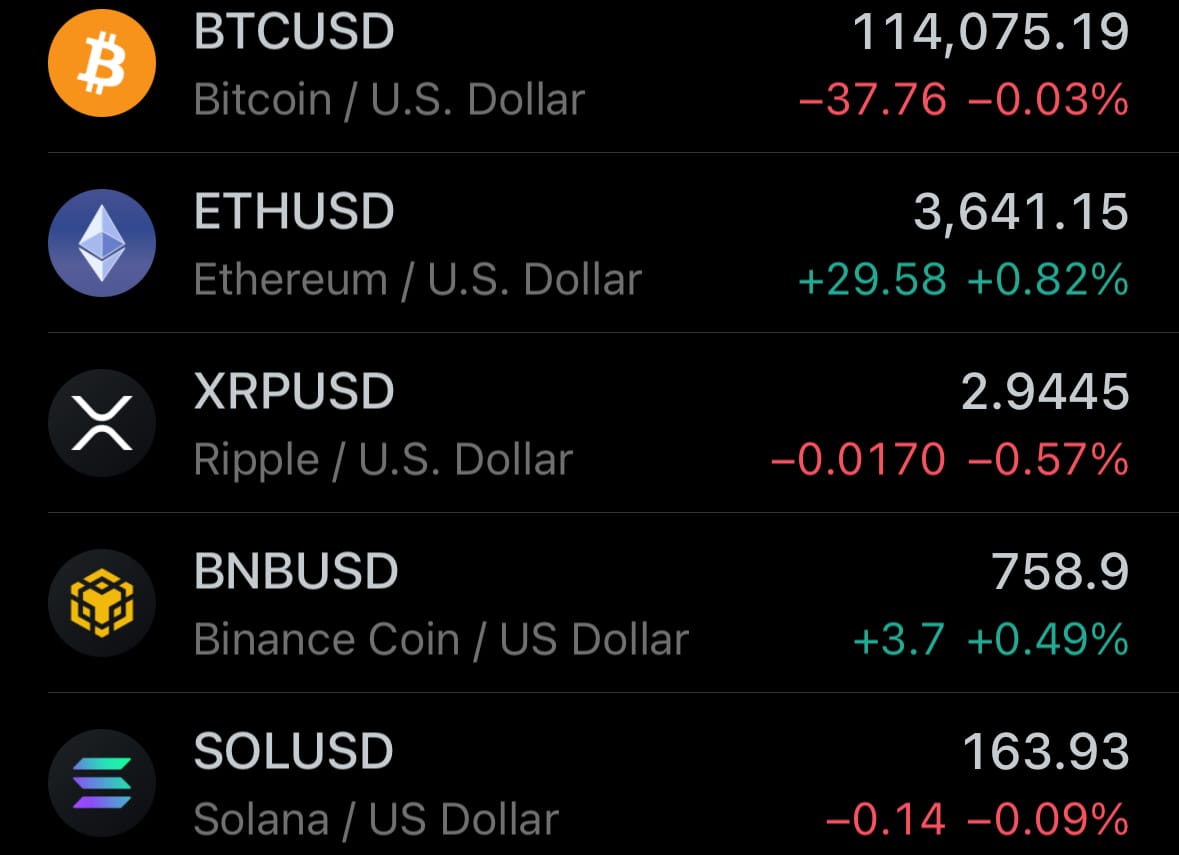
Business:
- On August 4, 2025, Palantir Technologies, a software company specializing in big data analytics and integration platforms, reported its Q2 2025 earnings, achieving revenue of $1.004 billion for the first time, a 48% increase from the previous year and surpassing analyst estimates of $940 million. Founded in 2003, Palantir primarily serves government, defense, and commercial sectors by enabling organizations to manage, analyze, and secure large datasets for informed decision-making, with an initial focus on intelligence and counterterrorism that has since broadened to enterprise applications. Core products include Gotham for government and defense uses, such as integrating data for threat detection and mission planning; Foundry for commercial data operations, supply chain management, and business insights; Apollo for software deployment and updates; and the Artificial Intelligence Platform (AIP) for AI-enhanced analytics and automation.
- Adjusted earnings per share reached $0.16, exceeding expectations of $0.14, alongside GAAP net income of $327 million and an adjusted operating margin of 46%. The company raised its full-year revenue guidance to $4.14 billion to $4.15 billion and projected Q3 revenue between $1.083 billion and $1.087 billion. Growth was fueled by strong demand for the AIP, with U.S. commercial revenue up 93% to $306 million in areas like healthcare, aviation, and manufacturing, and U.S. government revenue increasing 53% to $426 million through defense and intelligence contracts. Palantir secured 157 deals valued at $1 million or more, including 42 over $10 million, growing its customer base by 43% to 849 and total contract value by 140% to $2.27 billion.
Environment & Weather:
- On August 5, 2025, a cloudburst occurred in Dharali village, located in Uttarkashi district of Uttarakhand, India, leading to flash floods, landslides, and mudslides. The incident took place around midday, with heavy rainfall causing a rapid surge of water and debris from nearby hills, particularly along the Kheer Ganga river. This resulted in significant damage to infrastructure, including the destruction of homes, hotels, shops, roads, and a bridge. Dharali, situated near the Gangotri pilgrimage site in the Himalayan region, experienced parts of the village being washed away or buried, affecting local residents and potentially disrupting travel along the Char Dham Yatra route. Visual accounts from the scene showed people escaping as structures were engulfed by the floods.

- Reports confirm at least four fatalities, with estimates of 50 to over 100 individuals missing or trapped under debris, including villagers, workers, and visitors. Rescue efforts began promptly, involving the Indian Army, NDRF, SDRF, and local teams, which have so far evacuated approximately 37 people despite ongoing adverse weather. National leaders, including Prime Minister Narendra Modi and Home Minister Amit Shah, offered condolences and pledged assistance for recovery. The event underscores the region's susceptibility to monsoon-induced natural disasters, with weather forecasts indicating heavy rain continuing until August 10, prompting alerts for possible additional risks.
Science & Technology:
- On August 5, 2025, OpenAI released two new open-weight language models named gpt-oss-120b and gpt-oss-20b, marking the company's first open-source effort since GPT-2 in 2019. These models are available under the Apache 2.0 license, allowing free downloading, modification, and commercial use. The goal is to broaden access to advanced AI, enabling users to run the models on personal hardware for better privacy and cost efficiency. The larger gpt-oss-120b is designed for developers and businesses needing high performance, while the smaller gpt-oss-20b focuses on running efficiently on everyday devices like laptops and phones. This positions them as alternatives to similar models from other organizations.
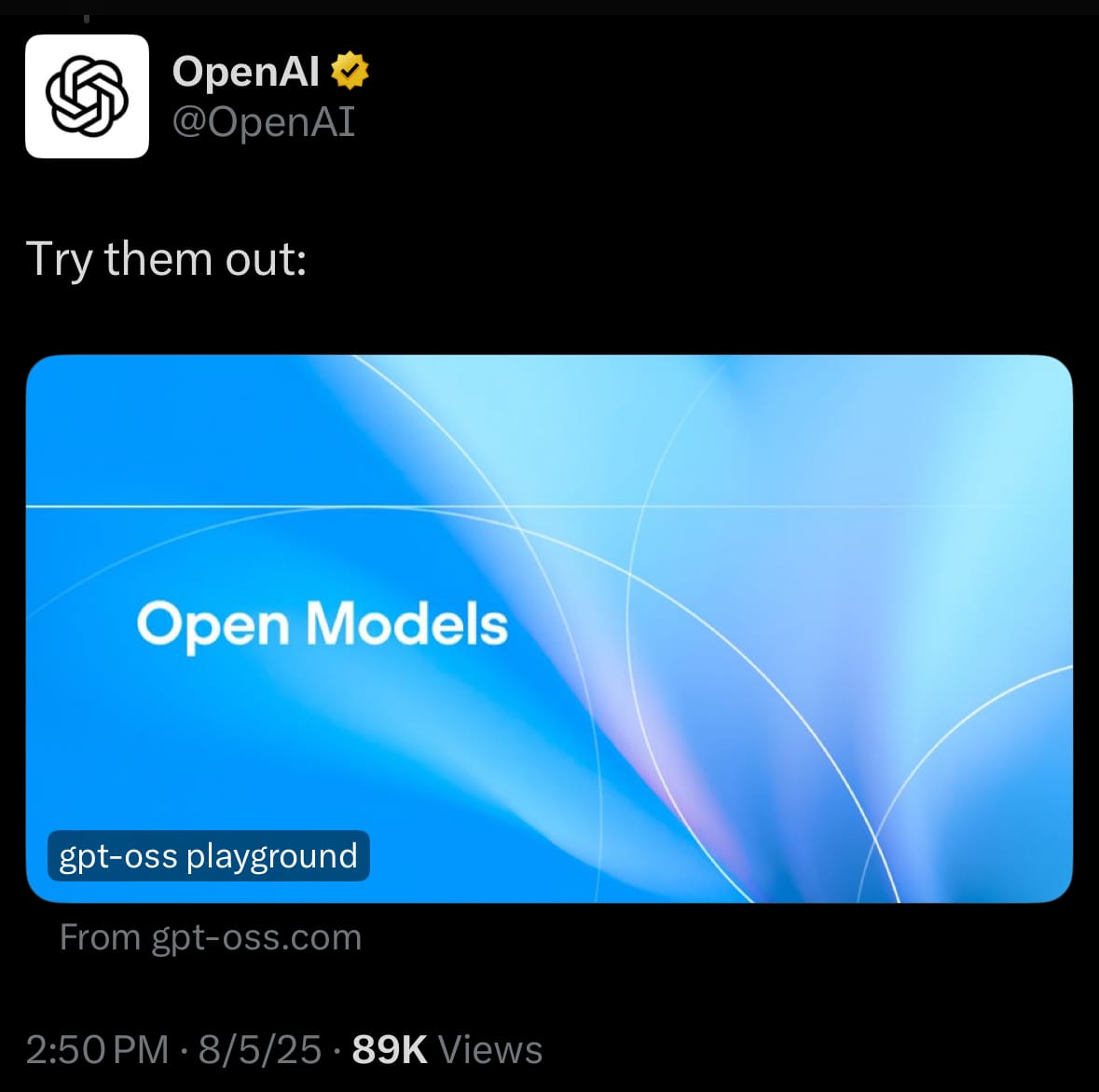
- These text-only models feature capabilities in reasoning, coding, and agentic tasks, with support for up to 128K context length, tool use, and chain-of-thought prompting. Benchmarks indicate that gpt-oss-120b performs close to some of OpenAI's proprietary models on tasks like diagnostics and problem-solving, while gpt-oss-20b matches smaller counterparts. Safety features include measures to reduce risks such as biosecurity concerns, with evaluations showing performance comparable to leading systems. The release is seen as a step toward encouraging broader innovation and addressing past critiques of closed development, though initial independent assessments reveal varying results, particularly in areas like creative writing.
- On August 5, 2025, Anthropic released Claude Opus 4.1, an upgraded version of its flagship model Claude Opus 4, with enhancements focused on agentic tasks, real-world coding, and complex reasoning. This model serves as a drop-in replacement for Opus 4, maintaining the same pricing while offering improved performance across various applications. It is designed for developers, researchers, and enterprises handling workflows, such as multi-step problem-solving and extended data analysis.
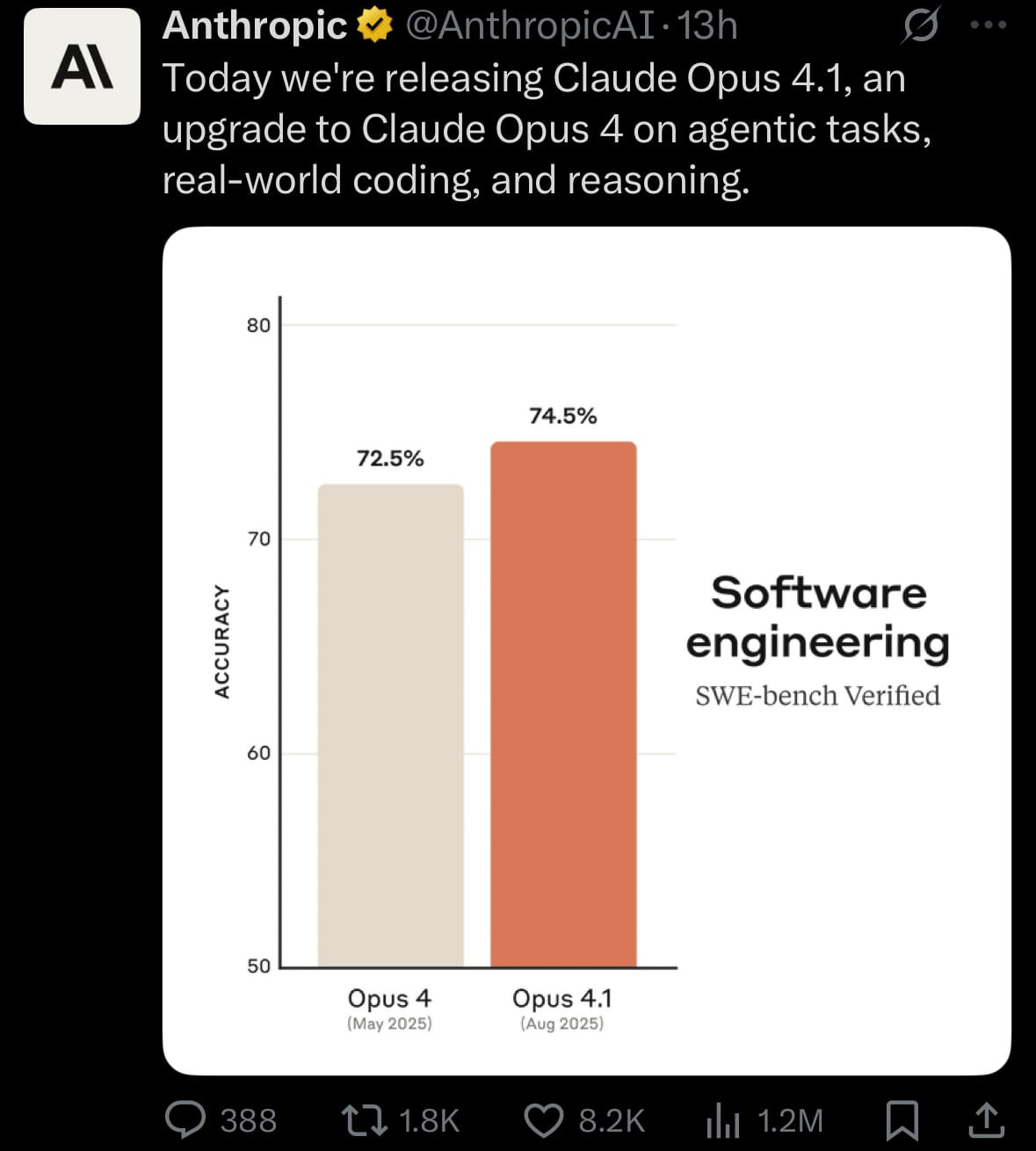
- Claude Opus 4.1 is immediately available to paid users on the Claude platform, Claude Code, the Anthropic API, Amazon Bedrock, and Google Cloud's Vertex AI, positioning it as a competitive option for high-demand AI tasks. The model excels in real-world coding, achieving a state-of-the-art 74.5% on the SWE-bench Verified benchmark, up from 72.5% for Opus 4, with notable strengths in multi-file refactoring and precise debugging in large codebases. It also advances agentic capabilities to 43.3% on relevant benchmarks (from 39.2%) and reasoning to 80.9% (from 79.6%), supporting up to 64K token context for extended thinking, tool use, and memory retention. Safety evaluations show improved harmless response rates and reduced cooperation with harmful misuse, remaining below higher risk thresholds under Anthropic's Responsible Scaling Policy.
Statistic:
- Largest public tech companies by market capitalization:
- 🇺🇸 NVIDIA — $4.347T
- 🇺🇸 Microsoft — $3.922T
- 🇺🇸 Apple — $3.011T
- 🇺🇸 Alphabet (Google) — $2.357T
- 🇺🇸 Amazon — $2.279T
- 🇺🇸 Meta Platforms — $1.917T
- 🇺🇸 Broadcom — $1.377T
- 🇹🇼 TSMC — $1.205T
- 🇺🇸 Tesla — $995.76B
- 🇺🇸 Oracle — $718.13B
- 🇨🇳 Tencent — $648.66B
- 🇺🇸 Netflix — $487.75B
- 🇺🇸 Palantir — $411.05B
- 🇩🇪 SAP — $330.90B
- 🇰🇷 Samsung — $326.66B
- 🇺🇸 AMD — $282.62B
- 🇨🇳 Alibaba — $281.90B
- 🇳🇱 ASML — $274.41B
- 🇺🇸 Cisco — $267.37B
- 🇺🇸 Salesforce — $236.60B
- 🇺🇸 IBM — $233.50B
- 🇺🇸 Intuit — $214.58B
- 🇺🇸 ServiceNow — $187.82B
- 🇺🇸 Uber — $186.92B
- 🇨🇳 Xiaomi — $178.80B
History:
- Salesforce was founded in 1999 by Marc Benioff, Parker Harris, Dave Moellenhoff, and Frank Dominguez with a bold vision: to revolutionize enterprise software by delivering it entirely via the internet. At a time when most businesses relied on expensive, on-premise solutions, Salesforce introduced the concept of Software-as-a-Service (SaaS), enabling customers to access customer relationship management (CRM) tools through a simple web browser. The company’s “No Software” campaign and focus on multi-tenant cloud architecture set it apart, leading to rapid adoption among small and medium-sized businesses.
- By 2004, Salesforce went public on the New York Stock Exchange under the ticker symbol CRM, marking a major milestone in the growth of cloud computing. Over the following decades, Salesforce expanded aggressively, evolving from a niche CRM provider into a dominant global cloud platform. It launched the AppExchange in 2005, opening its ecosystem to third-party developers, and introduced Force.com to let users build custom apps on its infrastructure. Strategic acquisitions—such as ExactTarget (marketing automation), MuleSoft (integration), Tableau (analytics), and Slack (collaboration)—broadened its capabilities far beyond CRM. Today, Salesforce powers sales, marketing, service, analytics, and AI-driven customer experiences for companies of all sizes.
Image of the day:
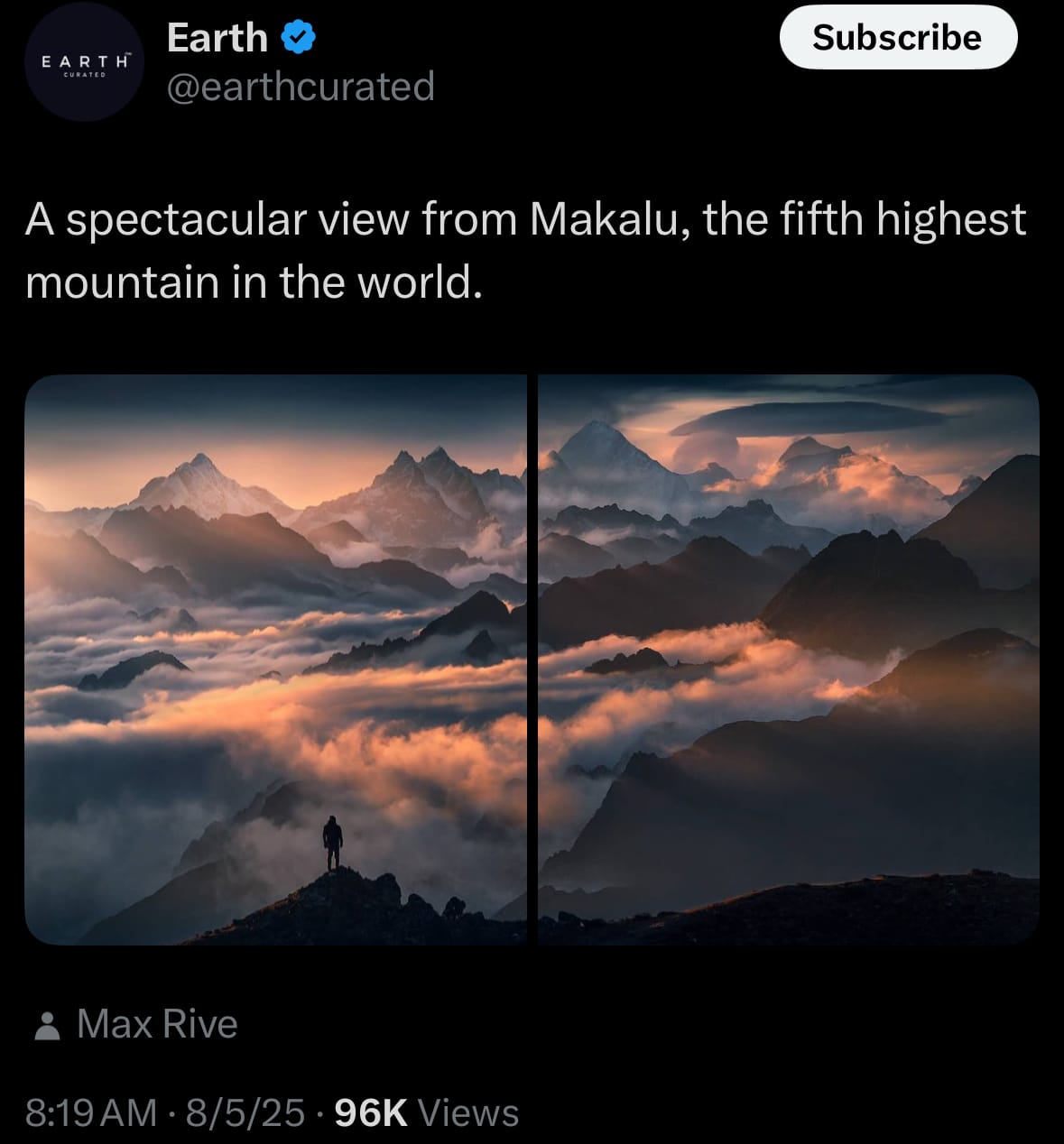
Thanks for reading!
Earth is complicated, we make it simple.
Click image to view the Earth Intelligence System:
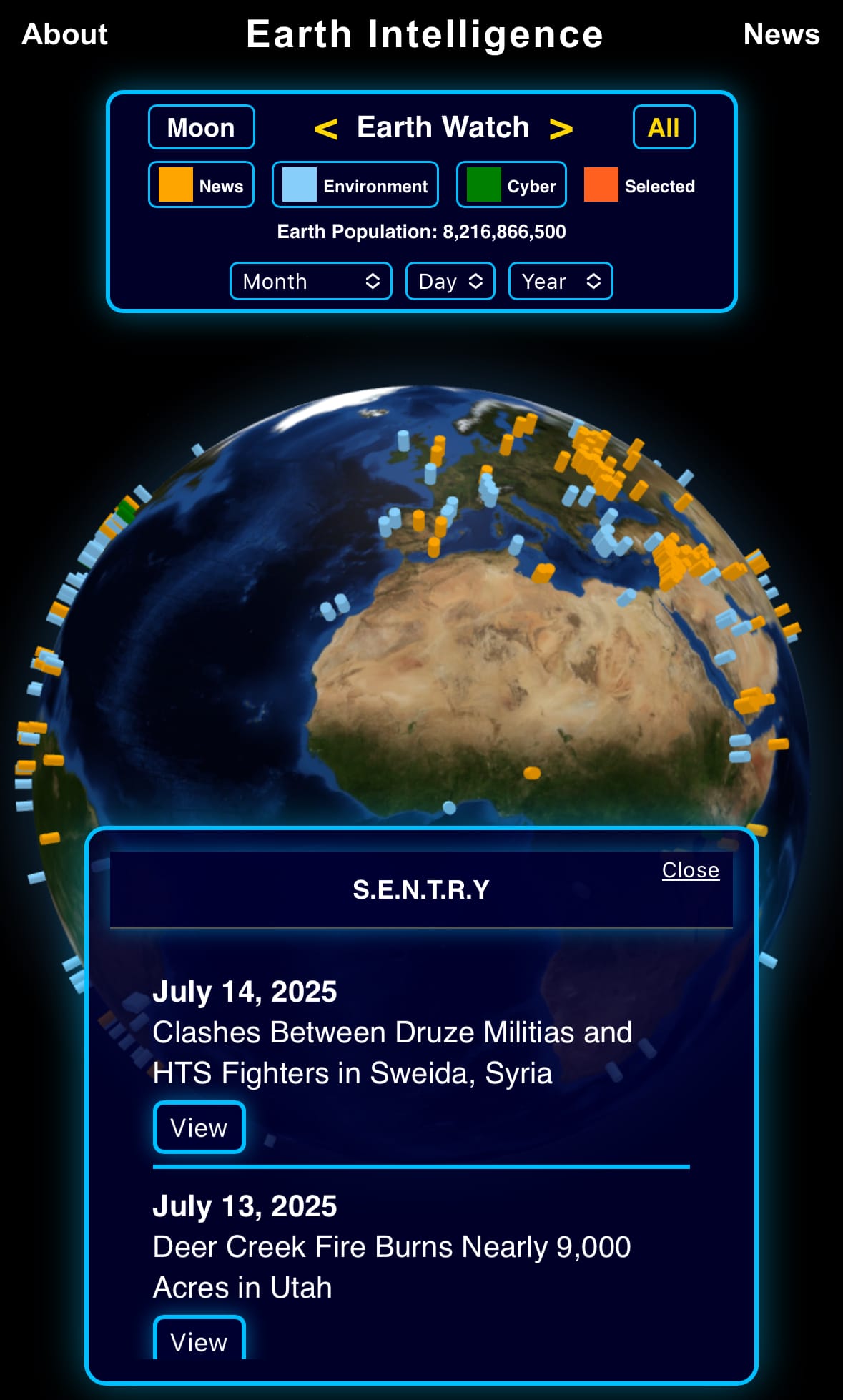


Support/Suggestions Email:
earthintelligence@earthintel.news




